Many of Portugal’s trees are older than the country itself. Cork oaks that clothe the Alentejo with bark become wine stoppers. Ancient olives predate the Roman roads. Chestnuts become the focal point of festivals. After researching Portugal’s most extraordinary specimens, we have ranked the 10 greatest trees in the country using five factors: age and survival, size and form, species rarity or ecological value, cultural or economic importance, and public recognition or awards. Below is a countdown with clear reasons for each pick and our practical notes for visiting these trees yourselves.
10. The Dragon Trees of Núcleo dos Dragoeiros, Funchal, Madeira
Species – Dracaena draco
Madeira is home to one of the world’s most otherworldly trees. Dragon trees branch only after flowering, and their crimson resin, called dragon’s blood, has a long history in medicine and art. In Funchal, a nucleus of centenary dragon trees gives you a rare chance to stand beneath a living relic of Atlantic biogeography.
You should also plan a stop at the nearby Jardim Botânico da Madeira. The contrast between the botanical garden and the wild patch of dragon trees makes for a perfect morning in the hills above Funchal.

9. Oliveira Milenar de Santa Iria de Azóia, Loures
Species – Olea europaea
In Greater Lisbon, an olive said to be nearly 3,000 years old still stands, lasting longer than the entire history of the country itself. This tree is not as famous as Abrantes’ Mouchão olive (see below), but it is a giant in its own right with estimates at around 2,800 to 2,900 years. It earns the ninth spot based on standing the test of time in an urban setting and for its role as a neighborhood monument that invites people to look up, slow down, and realize how young our modern city blocks really are.
Combine a stop here with a wander through the river-facing neighborhoods of eastern Lisbon for a day that connects the capital’s present and past.
8. Castanheiro Gigante de Guilhafonso, Guarda District
Species – Castanea sativa
Chestnut culture shaped the interior of Portugal for centuries, and this monumental chestnut is one of its proudest survivors. With a colossal trunk and a canopy that has shaded generations, the Guilhafonso giant helped feed families through lean years and still makes up a huge part of the local identity. It ranks eighth for cultural and historical weight, for heroic dimensions, and for the conservation story around it, including treatments that extended its life after suffering damage.
Time your visit with local chestnut season in the fall to taste the tradition this tree symbolizes.
7. Castanheiro de Vales, Tresminas, Vila Pouca de Aguiar
Species – Castanea sativa
If the Guilhafonso tree embodies the Beira Interior, the Vales chestnut is the great elder of Trás-os-Montes. Often described as around a thousand years old, it won Portugal’s Tree of the Year in 2020, which brought nationwide attention to the tree and to chestnut landscapes in general. We ranked Castanheiro de Vales seventh because of its celebrated public recognition combined with its age and beautiful form.
6. Eucalipto de Contige, Sátão, Viseu
Species – Eucalyptus globulus
Native to Australia but naturalized in Portugal, blue gum trees can be controversial because of fire and water concerns. Even so, singular specimens can be astonishing. The Contige eucalyptus rises about 43 meters with an 11-meter girth at breast height. This makes it one of the largest classified trees in the country, and it captured the Tree of the Year title for Portugal in 2023. We ranked it sixth for its raw stature and public acclaim.
You will find it beside the old EN229 road. The experience is visceral when you walk up and your field of view is filled entirely by this magnificent tree.

5. Calvos Oak, Póvoa de Lanhoso, Braga District
Species – Quercus robur
The Calvos Oak is often cited as the oldest oak on the Iberian Peninsula. Planted around 1510, it stretches to about 30 meters tall with a canopy that spans a small square on its own. Oaks are cultural anchors across northern Portugal, and the Calvos specimen is a textbook “civic tree,” the kind that ties a parish’s memories together.
The grounds include family-friendly space, which makes it easy to share the wonder with kids.

4. Plátano do Rossio, Portalegre
Species – Platanus × hispanica
Planted in 1838, the “Bem-Amado” plane tree has grown into a leviathan with a trunk that takes several people to encircle and a canopy among the largest in the Iberian Peninsula. It won Portugal’s Tree of the Year in 2021 and later represented the country in the European competition. We rank it fourth for its huge canopy and the way it turns a public square into a cathedral of shade every summer.
Go at midday in high summer and try to get a space on a bench. The living dome of green becomes a natural cool room, and you will understand why plane trees were planted in town centers for centuries.
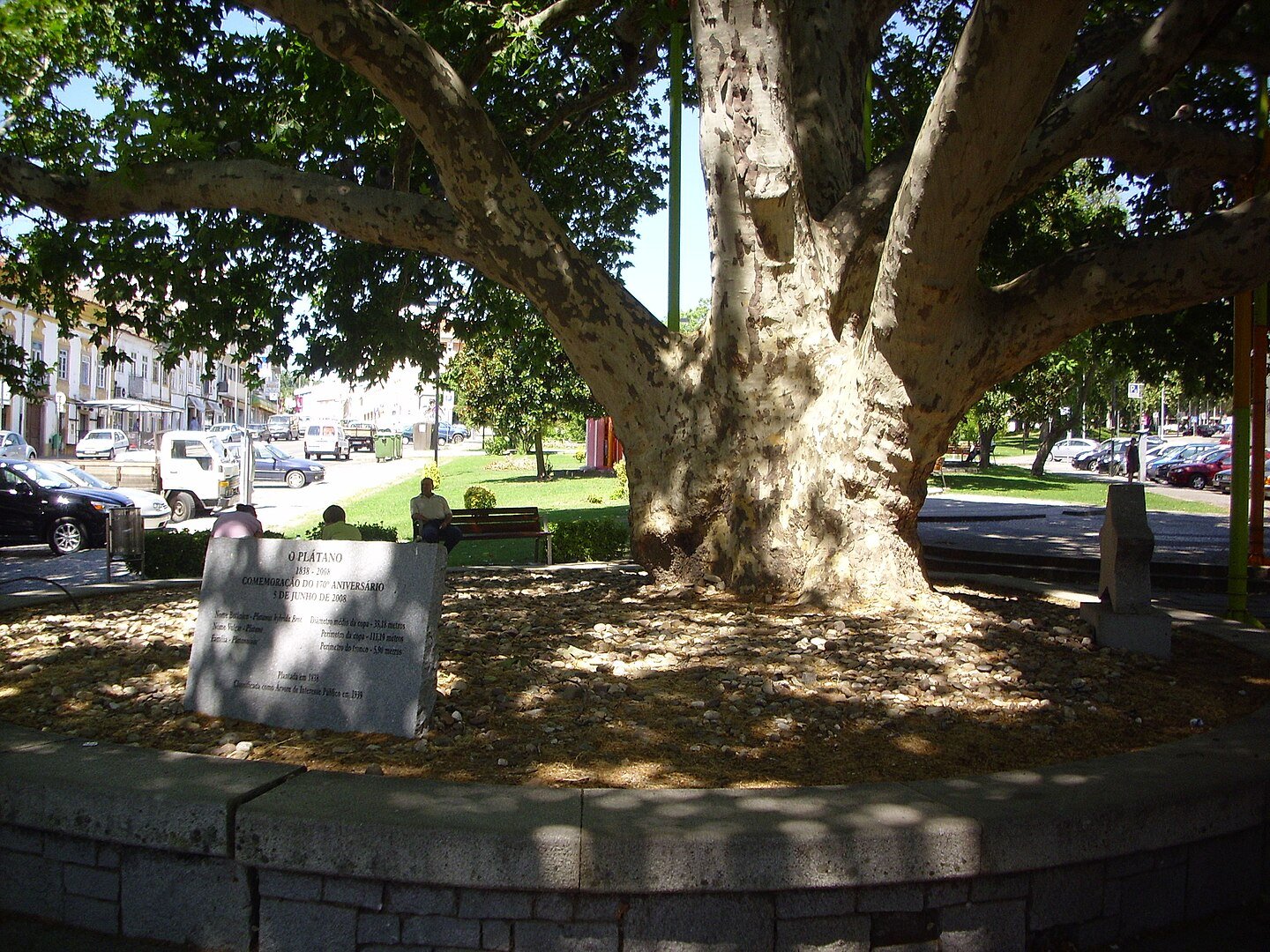
3. The Majestic Moreton Bay Fig, Quinta das Lágrimas, Coimbra
Species – Ficus macrophylla
This giant fig tree, planted in the 19th century by an aristocratic collector, was the product of seed exchanges with the Sydney Botanical Garden. Today, it spreads its massive limbs beside the romantic Fountain of Lovers in the Quinta das Lágrimas Gardens. In 2025, it achieved second place in the European Tree of the Year contest. This cemented its reputation as one of Portugal’s most iconic ornamental trees. It represents Portuguese garden culture and the enduring public love for trees that tell stories.
The Quinta das Lágrimas Gardens are already steeped in legend through the tragic love story of Pedro and Inês. Standing beneath this fig, you can feel how history, myth, and nature intertwine in Coimbra.
2. Oliveira do Mouchão, Mouriscas, Abrantes
Species – Olea europaea
Estimated at roughly 3,300 to 3,350 years old, this olive is one of the oldest trees on record in Portugal. It likely sprouted in the late Bronze Age long before Portugal existed. The trunk is a sculptural mass with hollows big enough to step inside, and the tree still bears fruit! Scientific debates about exact olive ages exist, but even careful studies concede this specimen is among the oldest trees in Portugal and one of the elders of the olive world. It ranks second because of its staggering age, superb condition, and its strong performance in national Tree of the Year contests.
The tree stands on private farmland but can be viewed respectfully from the nearby lane. Bring a wide-angle lens. You will want to capture the hollowed heart of the trunk and the ring of stones that now protect its roots.
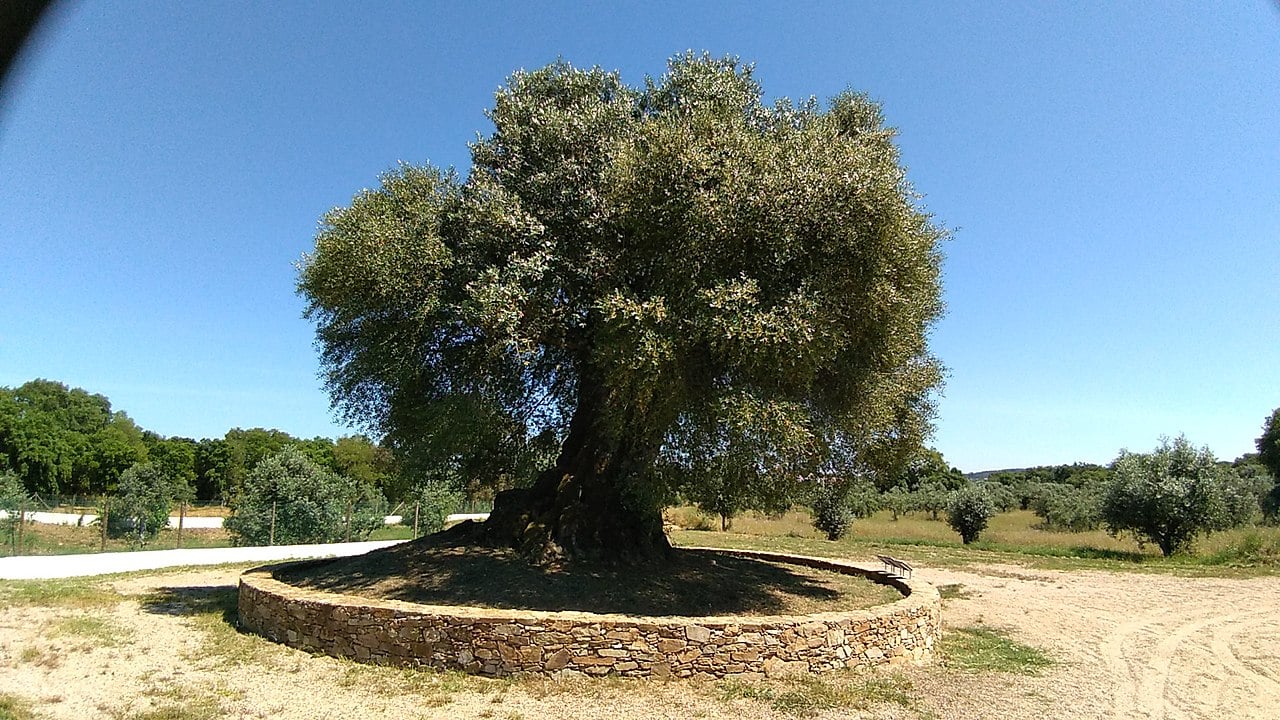
1. The Whistler Tree, Águas de Moura, Palmela
Species – Quercus suber (cork oak)
Yes, we know that the Oliveira do Mouchão is incredibly impressive, but, in our humble opinion, the greatest tree in Portugal must be a cork oak. Cork shapes Portuguese landscapes, livelihoods, exports, and identity. The Whistler Tree, planted in 1783–1784, is the largest and most productive cork oak on record, a Guinness-recognized giant and a European Tree of the Year winner. Its nickname comes from the chorus of birds that roost on its branches. Over two centuries, it has been harvested more than 20 times, including one year that produced enough cork for over 100,000 stoppers. The tree embodies a uniquely Portuguese relationship between people and woodland. It earns the top spot for its economic history, individual size and productivity, and international recognition.
The plains of the Alentejo are seasonally dramatic. Visit in late spring to see this tree at its greenest, or after a summer harvest to appreciate the cinnamon-colored trunks of recently stripped trees.
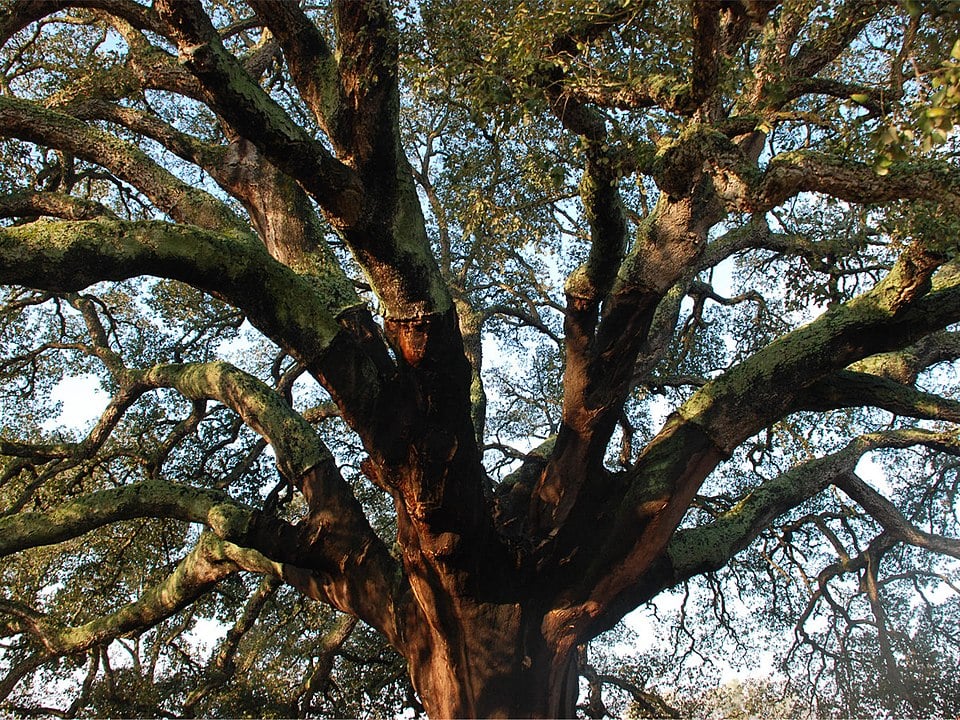
Honorable Mentions
Azinheira de Alportel, São Brás de Alportel
A veteran holm oak that placed second in the 2023 national vote, with around 17 meters of height and a deeply buttressed base. It is a classic roadside guardian on the EN2 and a beloved landmark for locals.Fanal’s Ancient Tils, Laurisilva of Madeira
While this list focuses on individual trees, the Fanal grove deserves special mention. The Laurisilva of Madeira is a UNESCO World Heritage forest, and its gnarled stinkwood trees often vanish into cloud or invite you right into its hollows on a beautiful sunny day as below.
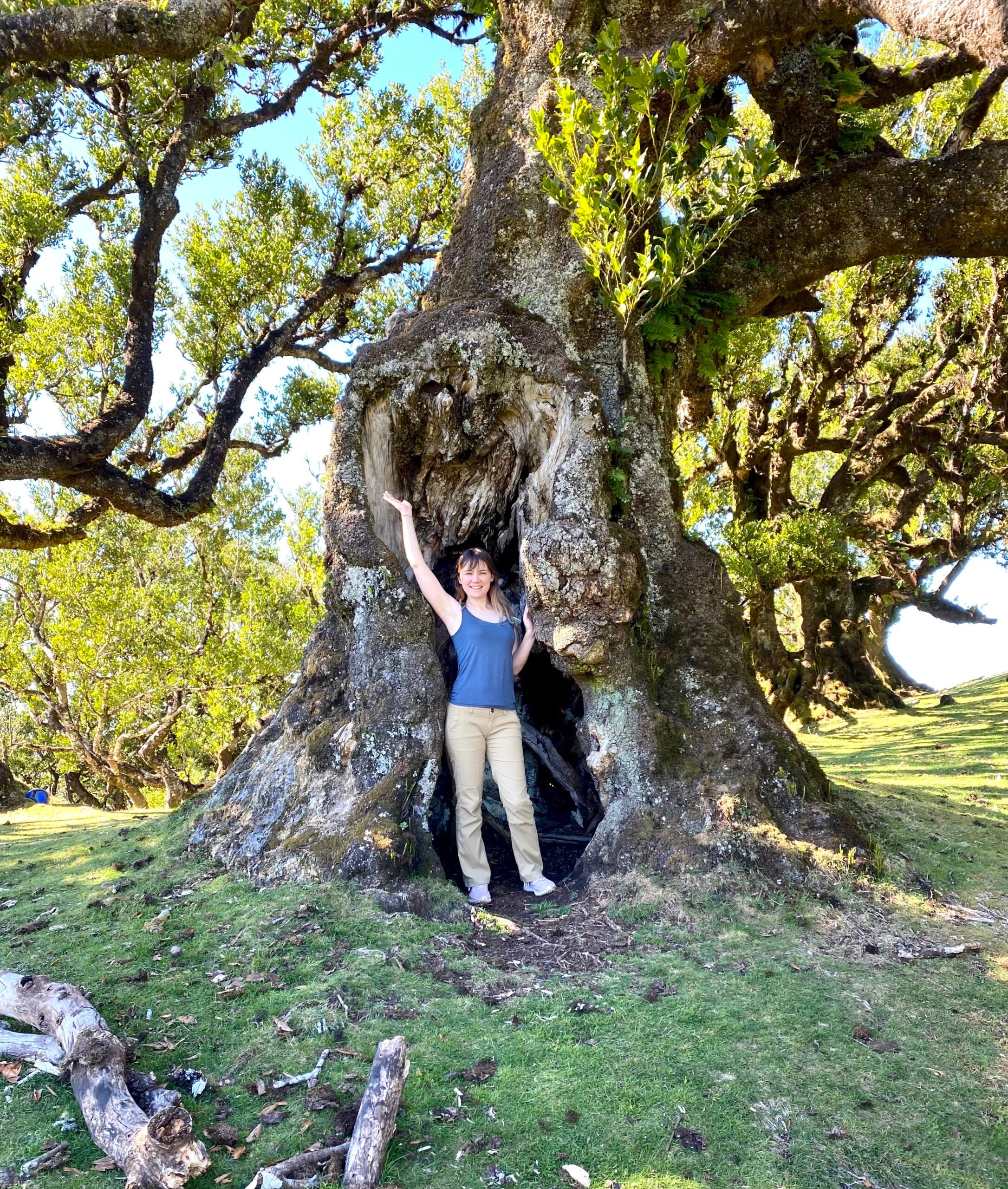
Final Thoughts
Portugal’s greatest trees hold centuries of history, tradition, and community within their branches. If your travels take you through Portugal, make time to visit at least one of these giants, and you will come away with a deeper appreciation for the resilience of nature and the cultural roots that make this country so extraordinary.
What makes these trees even more compelling is how accessible many of them are. You can encounter them in town squares, roadside stops, historic gardens, and even tucked into city neighborhoods. Seeing these natural monuments for yourself is one of the most rewarding ways to experience Portugal’s living heritage.

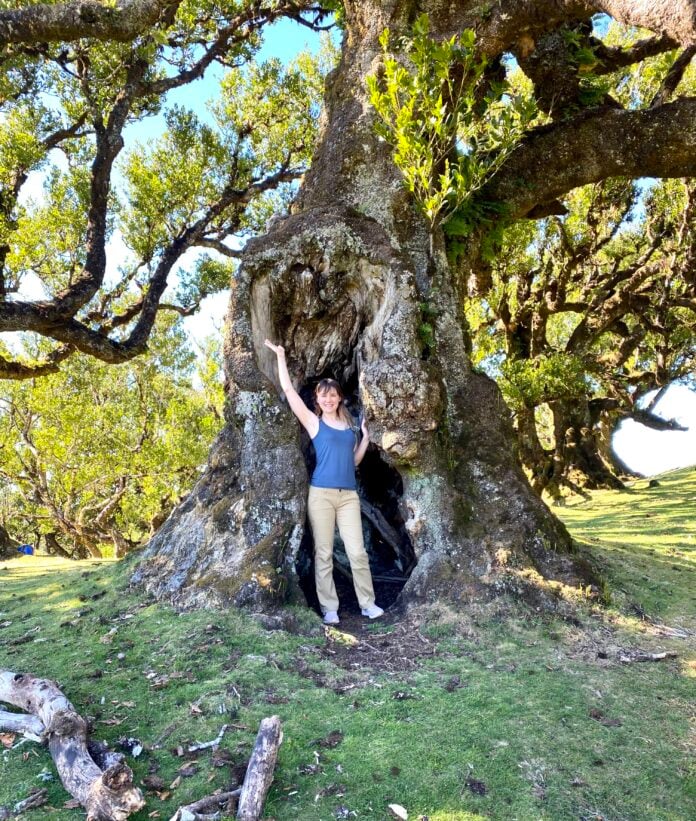

Why are only a few pictured? No mention of the Fatima oak? Try again.
Hello Karl, we have not been able to visit all of the trees ourselves and get photos. The Fátima is another amazing tree. We agree! If you have any photos of the trees we do not have photos of, let us know!